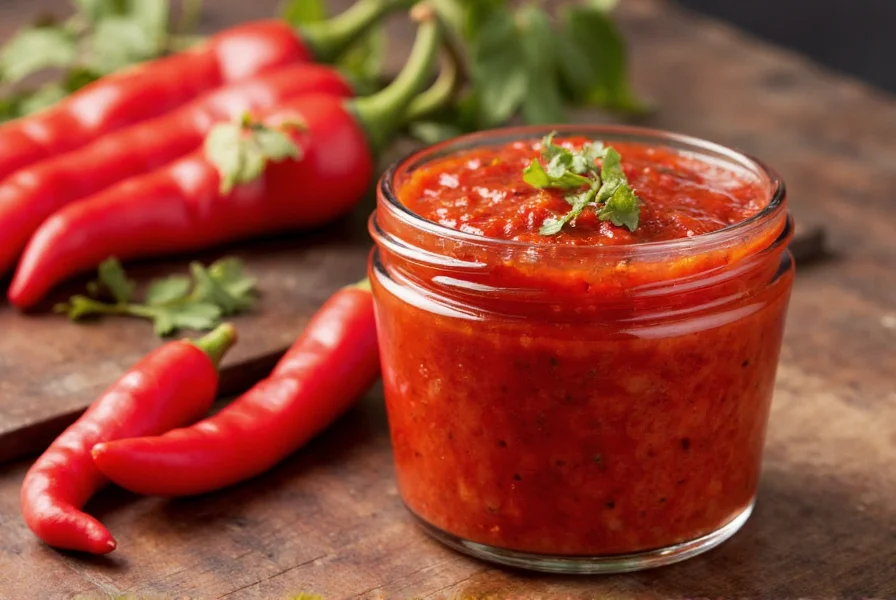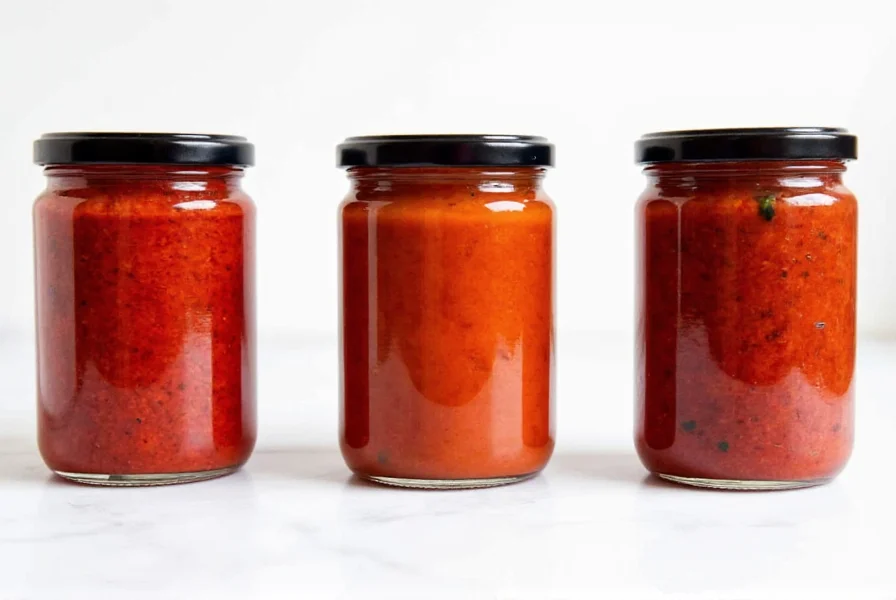Turkish red pepper paste (biber salçası) represents one of Turkey's most essential culinary building blocks. Unlike sweet roasted red pepper spreads found elsewhere, authentic Turkish red pepper paste features a complex flavor profile balancing natural sweetness with mild heat and earthy depth. The traditional preparation method—sun-drying peppers before processing—creates a uniquely concentrated flavor impossible to replicate with fresh peppers alone.
What Makes Authentic Turkish Red Pepper Paste Unique
The magic of genuine biber salçası lies in its simplicity and preparation method. Traditional producers use specific pepper varieties like isot or Aleppo peppers, which undergo sun-drying for several days before being ground into a thick paste. This sun-drying process concentrates flavors while developing natural sugars, creating a depth impossible with roasted peppers alone.
Commercial versions sometimes include preservatives or vinegar, but authentic homemade or artisanal Turkish red pepper paste contains only:
- Red peppers (typically isot or similar varieties)
- Ripe tomatoes
- Salt
- Occasionally olive oil for preservation

Cultural Significance in Turkish Cuisine
In Turkey, red pepper paste isn't merely an ingredient—it's culinary heritage. Every region has distinctive variations, with southeastern Turkey producing notably spicier versions while coastal regions favor milder interpretations. Families often prepare large batches during pepper season (August-October), preserving summer's bounty for year-round use.
Understanding how to use Turkish red pepper paste properly separates authentic Turkish cooking from imitations. Unlike harissa or ajvar, Turkish red pepper paste serves as a flavor foundation rather than a condiment. Chefs typically sauté it briefly in olive oil to release its full aroma before adding other ingredients—a technique called 'kavurma' essential for authentic flavor development.
Traditional Uses and Cooking Techniques
Mastering Turkish red pepper paste applications transforms ordinary dishes into authentic Turkish cuisine. Key techniques include:
| Dish Type | Application Method | Traditional Pairings |
|---|---|---|
| Breakfast dishes | Mixed with eggs in menemen | Feta cheese, fresh herbs, crusty bread |
| Kebabs & meats | Marinade base with olive oil | Lamb, chicken, grilled vegetables |
| Stews & soups | Sautéed with onions as flavor base | Bean dishes, lentil soups, vegetable stews |
| Sauces & dips | Thinned with water or yogurt | As side sauce for grilled meats or vegetables |
When cooking with Turkish red pepper paste, always remember to 'kavur' (sauté) it briefly in oil before adding liquids. This crucial step unlocks its full flavor potential and prevents any raw pepper taste. For best results, use 1-2 tablespoons of paste per serving and adjust according to your heat tolerance.
Making Authentic Turkish Red Pepper Paste at Home
While store-bought versions work in a pinch, homemade Turkish red pepper paste offers superior flavor. Here's a traditional preparation method:
- Select 2 kg of ripe red peppers (isot or similar) and 500g ripe tomatoes
- Wash thoroughly and slice peppers lengthwise, removing seeds
- Sun-dry peppers and tomatoes on clean cloths for 3-5 days until leathery
- Grind dried ingredients with 2 tablespoons salt until smooth
- Transfer to sterilized jars, top with olive oil layer for preservation
- Store in cool, dark place for up to 12 months
Modern adaptations using ovens or dehydrators work when sun-drying isn't practical, but avoid roasting peppers as this creates a different flavor profile associated with roasted red pepper spreads rather than authentic Turkish biber salçası.
Distinguishing Turkish Red Pepper Paste from Similar Products
Many confuse Turkish red pepper paste with other regional spreads. Understanding these differences ensures authentic cooking:
- Turkish red pepper paste vs roasted red pepper spread: Authentic Turkish versions use sun-dried rather than roasted peppers, contain no vinegar, and serve as cooking base rather than table condiment
- Turkish red pepper paste vs harissa: Harissa originates from North Africa, contains garlic and spices like caraway, and has significantly more heat
- Turkish red pepper paste vs ajvar: Serbian ajvar includes eggplant, has chunkier texture, and serves as a relish rather than cooking foundation

Nutritional Benefits and Storage Tips
Beyond its culinary value, Turkish red pepper paste offers notable health benefits. Rich in vitamins A and C from the concentrated peppers, it also contains lycopene from tomatoes—antioxidants that increase through the sun-drying process. The traditional preparation method preserves nutrients better than vinegar-based alternatives.
For optimal storage:
- Keep unopened jars in cool, dark pantry for up to 12 months
- After opening, store in refrigerator with olive oil layer covering surface
- Use clean utensils to prevent contamination
- Freeze in ice cube trays for long-term storage (up to 18 months)
Frequently Asked Questions
Can I substitute roasted red pepper spread for Turkish red pepper paste?
While possible in a pinch, roasted red pepper spread makes an imperfect substitute. Authentic Turkish red pepper paste has a more concentrated, complex flavor from sun-drying rather than roasting. For closest approximation, reduce roasted spread by half to concentrate flavors and omit added vinegar.
How spicy is traditional Turkish red pepper paste?
Authentic Turkish red pepper paste typically has mild to moderate heat. Most commercial varieties use isot peppers which provide warmth without overwhelming spice. Southeastern Turkish versions tend to be spicier, while coastal regions produce milder versions. The sun-drying process actually reduces perceived heat while enhancing flavor complexity.
What dishes absolutely require Turkish red pepper paste?
Certain Turkish dishes fundamentally rely on biber salçası for authentic flavor: menemen (Turkish scrambled eggs), kıymalı yumurta (spiced meat with eggs), many kebab marinades, and traditional stews like etli kuru fasulye. Omitting it creates a noticeably different dish that lacks the characteristic Turkish flavor profile.
How can I adjust Turkish red pepper paste recipes for milder flavor?
To reduce heat while maintaining flavor, try these techniques: sauté the paste longer in oil to mellow flavors, balance with sweet elements like caramelized onions, add a touch of honey or pomegranate molasses, or mix with tomato paste to dilute intensity while preserving umami. Always adjust heat gradually as you can't remove spice once added.
Does Turkish red pepper paste need refrigeration after opening?
Yes, authentic Turkish red pepper paste requires refrigeration after opening. The traditional preservation method uses a layer of olive oil on top, but once disturbed, it should be kept refrigerated. Always ensure the paste remains submerged under oil and use within 2-3 months for best quality. Discard if mold appears or aroma changes significantly.











 浙公网安备
33010002000092号
浙公网安备
33010002000092号 浙B2-20120091-4
浙B2-20120091-4